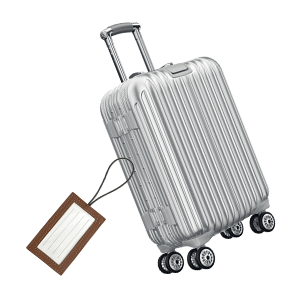
Pandemics lead to uncertainty, and uncertainty disrupts supply chains. It’s only when they break that most begin to appreciate their complexities. Where is that bag of flour on the grocery store shelf? How come there are no Lysol wipes anywhere? Seriously, though, where did all the toilet paper go? Canada’s supply chain depends on global connections to function in a sustainable, consistent and reliable manner. Dr. Rajbir Bhatti, PhD, an associate professor who teaches with the Bissett School of Business’s Bachelor of Business Administration — Supply Chain Management program, explains, “Canada sources a lot of its products from outside its geographic boundaries. As global production facilities got hit by COVID-19, products did not flow in at the desired time, cost and location.”
The distant supply
Bhatti says most global supply chains, if traced, go to China. So, even if Canada is buying from other European, American or Asian manufacturers, they, too, generally start with China for their products.
“It is fair to say that every element was disrupted in Canada’s supply chain with the introduction of the pandemic,” says Jason Riley, program instructor for the Supply Chain Management program with Mount Royal’s Faculty of Continuing Education and Extension. “Globalization will be considered the root cause of that damage by many and there will be an appetite to lean towards nationalism in order to reduce risk in the future,” Riley predicts. “The leaders in supply chain management will be reliant on cutting-edge technology in their effort to reduce operational costs, provide shorter lead times and greater customer satisfaction. Blockchain technology will certainly be more pervasive in mid- to large-sized firms in our immediate future.”
Bhatti also believes many supply chain strategies will likely change as countries re-examine sourcing procedures to be more flexible and responsive.
“Some might want to re-shore (bring businesses back home), or near-shore (bring businesses closer), and some might want to insource (rely less on third parties),” Bhatti says.
Japan has already taken a leadership position and allocated $2.2 billion for its manufacturers to re-shore. Dr. Denise Chenger, PhD, agrees that COVID-19 will likely lead more businesses to consider manufacturing locally. Chenger, who is an assistant professor and Mount Royal alumna, with a Business Administration Diploma and an applied degree of small business and entrepreneurship, uses an example of a student who manufactured clothing in Winnipeg. He discovered a more cost-effective way to do the same thing in China, but is rethinking this strategy. Bringing the supply chain closer to home may be costlier, but it brings down risk.
Bryce Mapletoft, a graduate of the Bachelor of Business Administration — International Business and Supply Chain Management program (2007), and now the manager of Strategic Sourcing at TC Energy, says, “In my opinion, COVID-19 has forced us to challenge and stress test our current sourcing strategies and adapt to the ever-changing global marketplace.
“COVID-19 has emphasized the importance of the interconnectivities of the global supply chain. The response has highlighted the direct impact supply chain teams have on the overall resiliency and success of companies.”
Skilled professionals keep the chain strong
A 2017 report called Accelerator 2.0: A Call to Action by the Canadian Supply Chain Sector Council in partnership with the Government of Alberta forecasts that nearly 119,000 full-time workers will be directly employed within the Alberta supply chain industry by 2021. The Council expects growth in every province, with British Columbia and Alberta forecasted to lead the numbers, which will require a large workforce to not only replace older workers but fill new positions.
Helping to close that gap, in 2019 Mount Royal’s Bachelor of Business Administration program introduced a major in supply chain management in addition to a non-credit program already available through the Faculty of Continuing Education and Extension.
Interim Provost and Vice-President, Academic Dr. Elizabeth Evans, PhD, says, “Those studying supply chain management will be highly employable. Not only will this area be critical as the Calgary and Alberta economies diversify, but every business is looking for ways to help their bottom line by moving raw materials through to customers more cost effectively.”
Making supple supply chains with real-time information
Supply chain experts such as Riley say professionals need to be aware of all the factors that introduce risks to the supply chain, and these can include, but are not limited to, severe weather, regional conflicts, labour disputes and political shifts. And, of course, pandemics.
Chenger, who has 25 years of experience working on large projects for companies such as Shell, Tesoro, Suncor, Husky, Penn West, the Parkland Corporation and Telus, says a large part of what she did as a consultant was help companies get the real-time data (or business intelligence) they needed to manage risks and make good decisions. Mount Royal students get exposure and practise with the very same thing in the $500,000 CN Supply Chain Analytics Lab, which works on the Refinitiv Eikon Data Platform. The data amassed is expansive, includes historical and immediate information, and covers not just financials and locations, but also indicators like regional ethics, sustainability and the environment. Cameron Saik, a recent graduate with a double major in supply chain management and marketing, explains, “The lab offers students an amazing chance to experience a very important part of the supply chain sector — analytics.
“Learning how to approach analytics and data is a key aspect of allowing supply chain students to become prepared for real-world applications.” For Mapletoft, a career in supply chain management has been incredibly rewarding because he is involved in solving dynamic, challenging business problems.
He says, “Supply chain management provides end-to-end solutions that touch nearly every aspect of a company. We develop strategic sourcing plans that impact how we execute billions of dollars in our capital program across the major projects and operations. We conduct sophisticated negotiations to source materials and services from around the world, and strategically manage the distribution of critical materials to support our projects and operations.”
The evolution of the industry will result in more stable supply chains in the future, and Mount Royal grads will be there holding the links together.
The winners and the losers in the supply chain during COVID-19

652%
Bread machine sales went up as more people began baking.
307%
Consumers temporarily unable to work out at the gym or fitness centre purchased exercise equipment to keep fit at home, driving up sales.


77%
With travel suspended and people working from home, the sale of luggage and briefcases went down.
64%
Camera purchases went down as there were fewer special moments to capture (weddings, sports events and travel).

Read more Summit
Four roads less travelled and paved by education
Forging a new path isn’t easy, but it’s set them on a course for a new and different kind of success.
READ MORE

